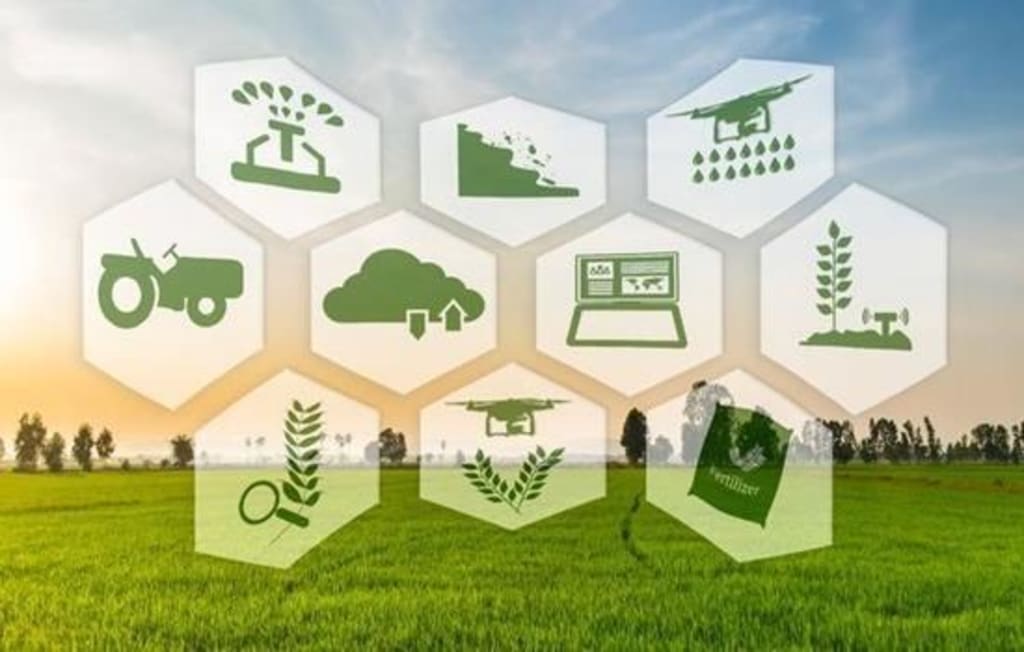
eFarming, also known as electronic farming, refers to the use of technology in agriculture to improve farm productivity and efficiency. In recent years, the use of technology in agriculture has increased dramatically, and eFarming has become a popular method for farmers to increase their yields, reduce waste, and improve their overall business operations.
One of the main benefits of eFarming is improved efficiency. Farmers can use technology to streamline their operations, from planting and harvesting to marketing and distribution. For example, precision agriculture techniques allow farmers to use data and technology to optimize their irrigation systems, which can result in water savings and improved crop yields. Additionally, by using data to monitor crop growth and health, farmers can make informed decisions about when to apply fertilizers and pesticides, which can reduce waste and improve the overall health of their crops.
Another benefit of eFarming is increased productivity. With the help of technology, farmers can automate many tasks that used to be done manually. For example, drones can be used to survey large areas of land, collect data on crop health and yield, and spray pesticides and fertilizers. Robots and autonomous vehicles can be used to perform tasks such as planting and harvesting, freeing up human labor for more complex and creative tasks. In this way, eFarming can help farmers increase their yields, reduce labor costs, and improve their overall bottom line.
In addition to these benefits, eFarming also has the potential to make agriculture more sustainable. For example, precision agriculture techniques can help farmers reduce their use of fertilizers and pesticides, which can help to protect the environment. Furthermore, by using technology to improve the efficiency of their operations, farmers can reduce their overall carbon footprint and help to mitigate the impact of agriculture on the environment.
However, it is important to note that eFarming is not without its challenges. One of the main challenges is the cost of technology. The cost of drones, robots, and other eFarming technologies can be high, and farmers may need to make a significant investment to adopt these technologies. Furthermore, the cost of training and support can also be high, and farmers may need to invest in training programs to learn how to use these technologies effectively.
Another challenge is the lack of infrastructure in many rural areas. In many developing countries, farmers may lack access to the technology and internet connectivity that is necessary to implement eFarming solutions. This can be a significant barrier to adoption, and farmers may need to invest in infrastructure improvements to take advantage of eFarming technologies.
Advantages of eFarming
Increased efficiency and productivity: eFarming allows farmers to use technology to automate many of their tasks, freeing up time and resources. For example, using drones and sensors to monitor crops and track soil moisture levels can help farmers make more informed decisions about when to water, fertilize, and spray their crops. This, in turn, can result in increased yields and more efficient use of resources.
Better use of data: With eFarming, farmers can collect and analyze vast amounts of data from their crops and farm operations. This data can be used to identify areas where their operations can be improved and to make better decisions about things like planting, harvesting, and marketing.
Improved crop management: eFarming also allows farmers to monitor the health of their crops in real-time, which can help them quickly identify and respond to any problems that arise. This can result in healthier crops, reduced waste, and increased yields.
Increased profitability: By using technology to improve efficiency, productivity, and decision-making, eFarming has the potential to increase farmers' profits. This can be especially important for small-scale farmers who may have limited resources and are looking for ways to improve their bottom line.
Disadvantages of eFarming
High cost: One of the main challenges of eFarming is that it can be expensive. Farmers may need to invest in new equipment, software, and training in order to adopt these technologies. This can be a major barrier for small-scale farmers who may not have the resources to make these investments.
Technical knowledge and skills: Another challenge is that farmers need to have a certain level of technical knowledge and skills in order to use eFarming effectively. This may require additional training, which can be time-consuming and expensive.
Dependence on technology: eFarming also raises concerns about the potential dependence on technology in agriculture. If there is a power outage or other technological failure, it could result in significant disruptions to farming operations.
Data security: With eFarming, farmers are collecting and storing large amounts of sensitive data, including information about their crops, soil, and financial operations. This raises concerns about the security of this data and the potential for hacking or other forms of cybercrime.
In conclusion, eFarming has the potential to transform the agriculture industry, making it more efficient, productive, and sustainable. While there are challenges to overcome, the benefits of eFarming are significant, and farmers who adopt these technologies can reap the rewards in terms of increased yields, reduced waste, and improved business operations. With continued investment in eFarming technologies, we can expect to see the agriculture industry continue to evolve and improve in the coming years.
you can learn more about e farming here, https://www.digistore24.com/redir/449012/jaswanthm206/
About the Creator
jaswanth m
Hi there, I'm Jaswanth! I'm a passionate writer with a talent for crafting engaging and informative content. Over the years, I've honed my skills and developed a wide range of expertise in the field of writing.
Enjoyed the story? Support the Creator.
Subscribe for free to receive all their stories in your feed. You could also pledge your support or give them a one-off tip, letting them know you appreciate their work.





Comments
There are no comments for this story
Be the first to respond and start the conversation.